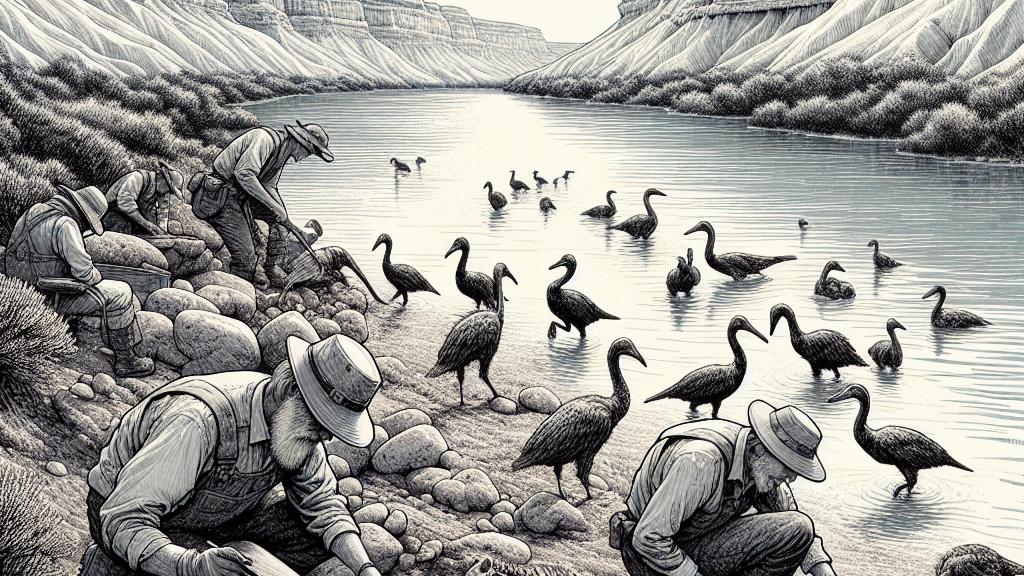Discovering New Fossils of Ancient Waterbirds and Their Feeding Habits
Overview
- Recent discoveries in Eocene fossils unveil fascinating waterbird behaviors.
- Four new ichnotaxa present unique insights into ancient foraging techniques.
- These findings highlight the adaptability of waterbirds in their ecosystems.

Unearthing History in Utah's Eocene Formation
In the stunning landscapes of Utah, a group of dedicated paleontologists has made a groundbreaking discovery by examining ancient mudflat fossils from the Eocene epoch, a period that existed between 55 and 46 million years ago. Imagine uncovering remnants that depict the intricate feeding habits of ancient waterbirds—these fossils provide a vivid snapshot of life long ago. The ichnotaxon Presbyornithiformipes feduccii stood out among the findings, capturing researchers' imaginations with its implications of sophisticated feeding behaviors. These birds, much like modern ducks, exhibited remarkable strategies as they searched for food along the verdant lake margins, demonstrating a deep connection to the ecosystems they inhabited.
Revealing Four Distinct Foraging Behaviors
Dr. John-Paul Zonneveld and his enthusiastic team of researchers have ingeniously identified four new ichnospecies, each named to reflect their fascinating feeding strategies. Consider Erevnoichnus blochi, for example; this species showcases a behavior akin to vigorous bill-stirring, where birds agitate the sediment in search of hidden treasures beneath the surface. Another species, Aptosichnus diatarachi, employed a more delicate technique, gently probing the mud for prey. Such diverse and intricate behaviors reveal how these ancient waterbirds expertly adapted to their environments, providing us with captivating insights into the ecological interplay of the Eocene landscapes.
Clarifying Terminology: More Than Just 'Dabble Marks'
A crucial aspect of this study underscores the importance of precise terminology when describing these ancient feeding marks. For years, the term "dabble marks" has been used, but Zonneveld argues that it can be misleading, as it only describes a specific behavior seen primarily in modern ducks. In reality, the feeding strategies of these Eocene birds were far more complex. By dropping terms like 'dabble,' researchers can better capture the essence of varied behaviors such as upending or probing. This rich vocabulary not only enhances our understanding but also highlights the remarkable ecological roles these birds played, emphasizing their evolutionary journey through time.

Loading...